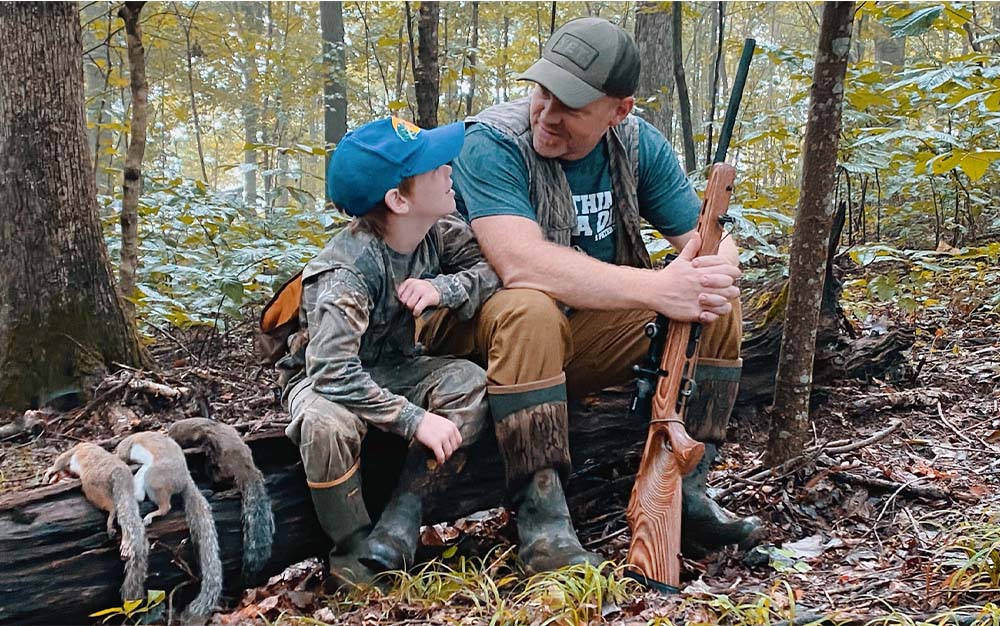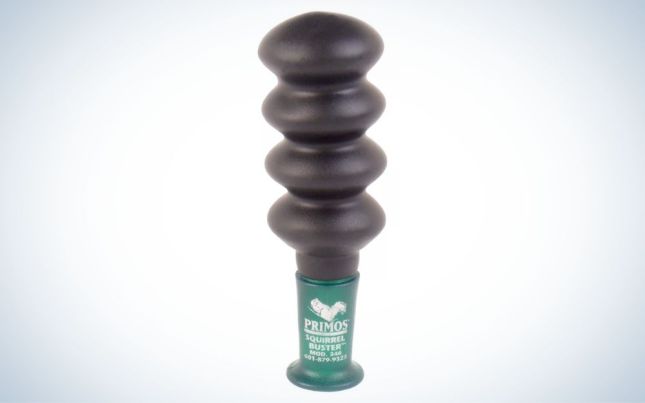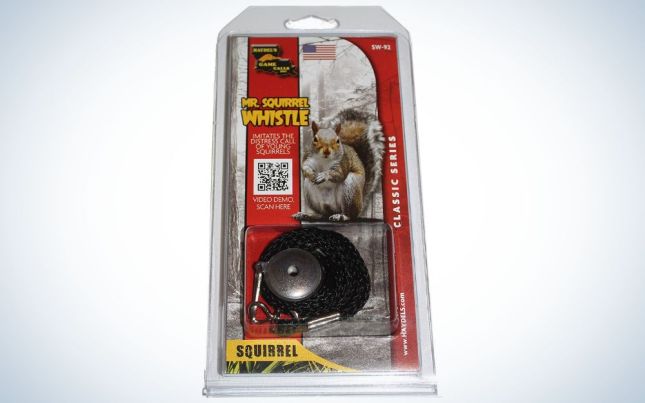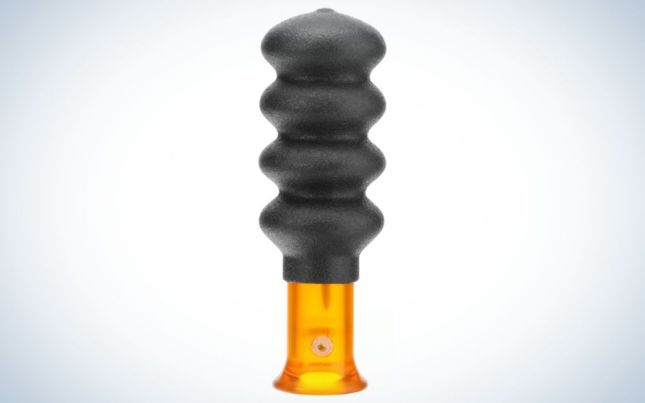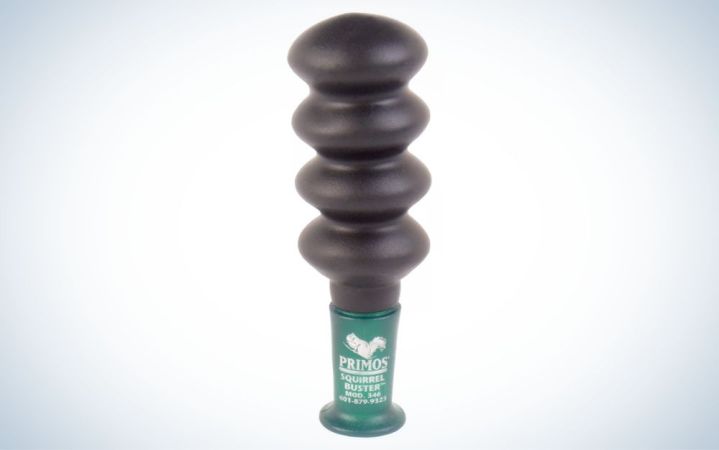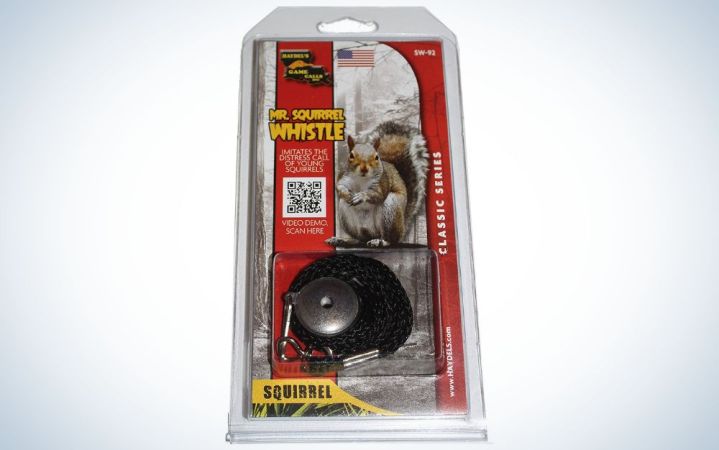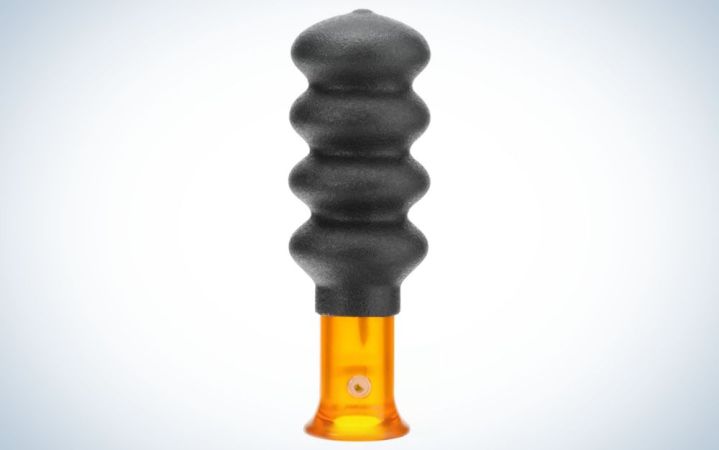We may earn revenue from the products available on this page and participate in affiliate programs. Learn More ›
In the early days of my hunting career in West Tennessee, I was following my father’s footsteps as we searched the woods for squirrels with a call in hand. In my mind, it as an adventure as big as chasing elk through the Rockies. I was hunting with my dad, and that’s about as good as life gets for an 8-year-old boy.
We only toted two squirrels out of the woods on my first hunt with dad, but it was enough to light a fire that’s burned every season since.
Shortly after that first squirrel hunt, I remember buying a Mr. Squirrel Whistle from Haydel’s. In my mind, every serious squirrel hunter was equipped with a squirrel whistle hanging around their neck.
Unfortunately, I was under the impression that I’d blow the call, and squirrels would come scrambling my way, like ducks over the decoys. I’ll never forget blowing that call out behind the house, trying my best to call squirrels off the neighbor’s bird feeder. To my surprise, all the squirrels ran for their life. I might as well have sounded a squirrel siren. They scampered to the trees like their tails were on fire. That day I learned that while the squirrels didn’t come running in droves, the call I blew made every squirrel in town start barking and chattering, which is invaluable when you’re trying to locate squirrels in the woods. The best squirrel calls won’t magically draw critters into gun range, but the right call can help you locate squirrels, getting you one step closer to filling your bag limit.
- Best Overall: Primos Squirrel Buster
- Best for Early Season: Haydel’s Mr. Squirrel Whistle
- Best Value: Hunters Specialties
- Best Cutter Call: Two Quarters
- Best DIY: Lemongrass
Best Overall: Primos Squirrel Buster
Best Overall
Why It Made the Cut
The Primos Squirrel Buster sits atop this list because it’s user friendly, and even new callers can make realistic barks and chatters with it.
Key Features
- Bellow-style design
- Five sounds in one call
- Rubber/plastic construction
Pros
- Makes the complete squirrel vocabulary
- Easy, one-hand use
- Hyper realistic sounds of the gray and fox squirrel
Cons
- No lanyard
Product Description
This bellow-style call looks similar to competitors, however the authentic sounds set this call apart. You can easily achieve the distinctly different sounds of the gray squirrel and the deeper, raspier sounds of the fox squirrel. Primos claims that this call makes five sounds, but by manipulating hand placement and air pressure, you can produce even more sounds with plenty of mood and emotion. Like anything, this takes practice. But once you figure out the sweet spots, you’ll quickly find what tricks produce the most realistic calls.
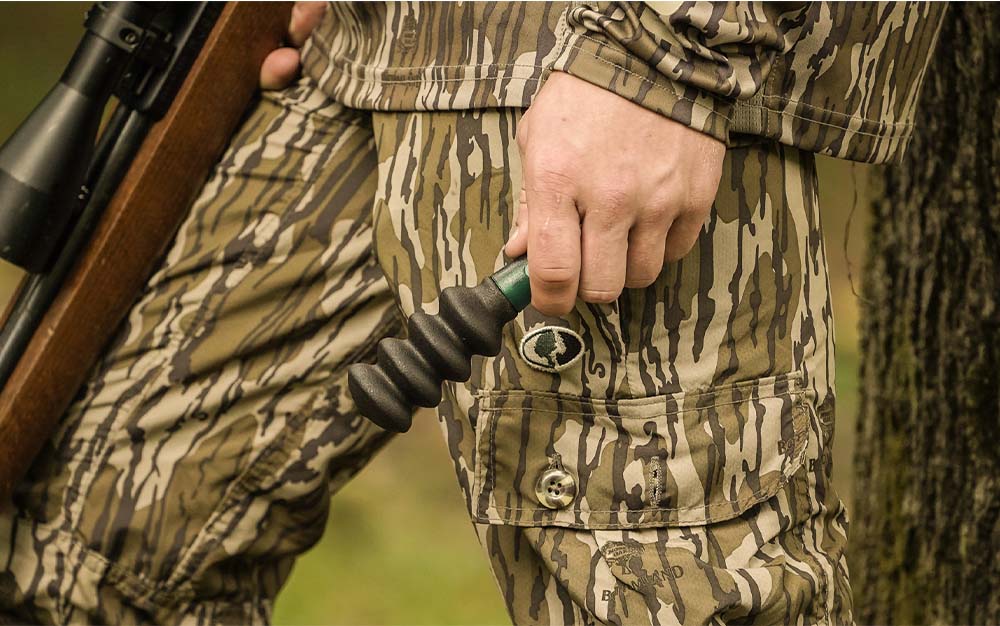
While one-handed operation is easy to make solid squirrel calls, two-handed use allows for a wider range of the squirrel vocabulary. Squeeze or shake the call for barks and chatters, or make distress whines and cries with the call to your lips.
This call delivers ample options to make a squirrel give away its location. Excited barks and chatter will cause a squirrel to respond with vocalizations and often a flash of the tail. It’s just the giveaway a hunter needs to move into range for a shot.
Best for Early Season: Haydel’s Mr. Squirrel Whistle
Best for Early Season
Why It Made the Cut
I carried a squirrel whistle around my neck as a child, and the sound of the whistle takes me back to those first attempts at bushytails in the early fall. The Squirrel Whistle is perfect for the early season when the action slows down later in the morning, and squirrels can’t help but give away their location when you sound the distress whines and cries.
Key Features
- Lanyard Attachment
- Multiple whistle distress sounds
- Mouth call design
Pros
- Compact and lightweight
- Included lanyard ensures you never lose it
- Works equally as well as a predator call
Cons
- Not as realistic as some DIY options
- Can potentially spook squirrels
Product Description
This whistle-style call is roughly the size of a quarter and features a hole in the middle that serves as the air chamber. It’s an inhale design, so it’s important to make sure you always leave it on the lanyard to prevent choking. Four to five sharp whistle blasts create the sound of a squirrel in distress. It’s a common sound heard in the woods when a hawk or owl attacks a squirrel on the limb or ground. The end result is typically the same—every squirrel in the area starts barking, chattering, and flagging their tail. It’s designed to put them on alert, and you’ll quickly see that this squirrel call actually works.
While this distress call gets the squirrels talking, that’s also one of its drawbacks. After all, it is a distress call, so squirrels have a tendency to run away when they think they’re in danger.
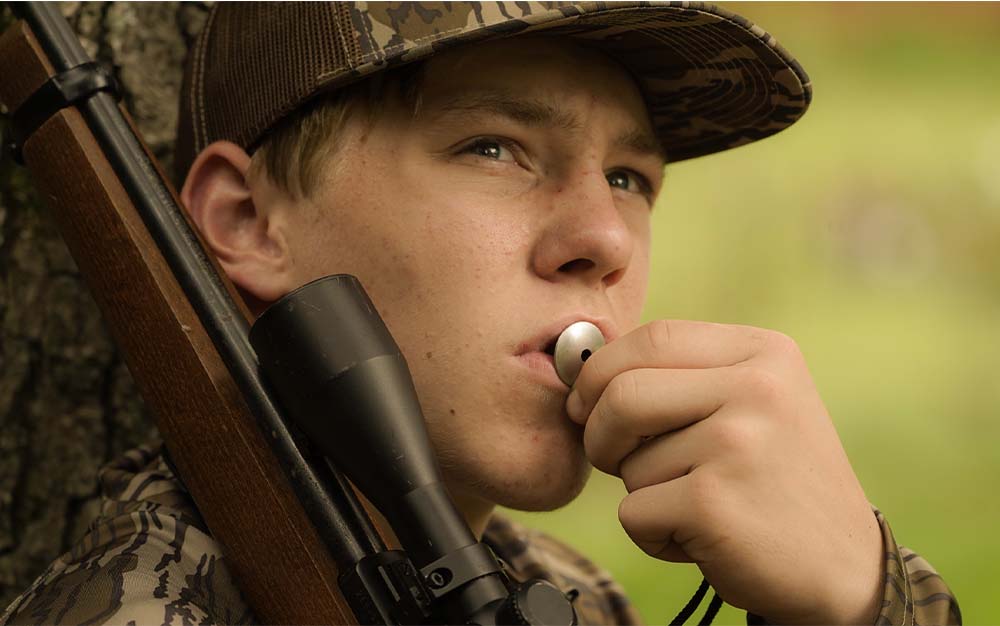
While it may play on the maternal instinct of a sow squirrel, and bring her closer to investigate what she thinks might be one of her young, it will typically put the local squirrels on high alert. If you have a squirrel close enough for the shot, it’s time to pull the trigger. Using this call to bring a squirrel closer for an easier shot will likely jeopardize your opportunity for success.
Use this call in conjunction with a broken branch or switch to swat and thrash the leaves to add realism to your calling routine. You want to paint the picture of a predator attacking and scuffling with a squirrel in the leaves.
Best Value: Hunters Specialties
Best Value
Why It Made the Cut
This H.S. Squirrel Call produces almost the entire squirrel vocabulary, including distress cries. It’s a lot of call for a little cash.
Key Features
- Bellow-style design
- Rubber/plastic construction
- Multiple calls in one
Pros
- Budget friendly
- Versatile
- Easy one-hand use
- Realistic
Cons
- No lanyard
Product Description
The H.S. Squirrel Call is a bellow-style call designed to produce a wide variety of squirrel sounds. It allows hunters to mimic barks, chatters, screeches, and distress sounds of the gray and fox squirrel. This is another call designed to help you locate squirrels by enticing them to bark and chatter back at the sounds produced.
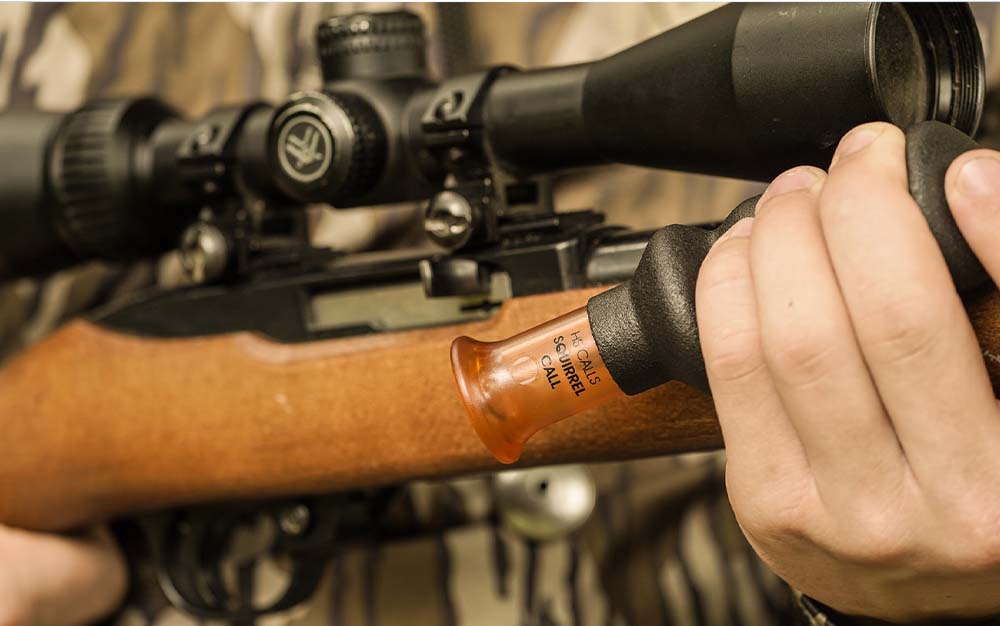
With a rubber and plastic construction that’s not hindered by rain or moisture, this call will work in any weather conditions. You can use one hand to easily run the call if you’re toting your squirrel hunting rifle in the other. Or use it with two to dial in hyperrealistic calls.
Best Cutter Call: Two Quarters
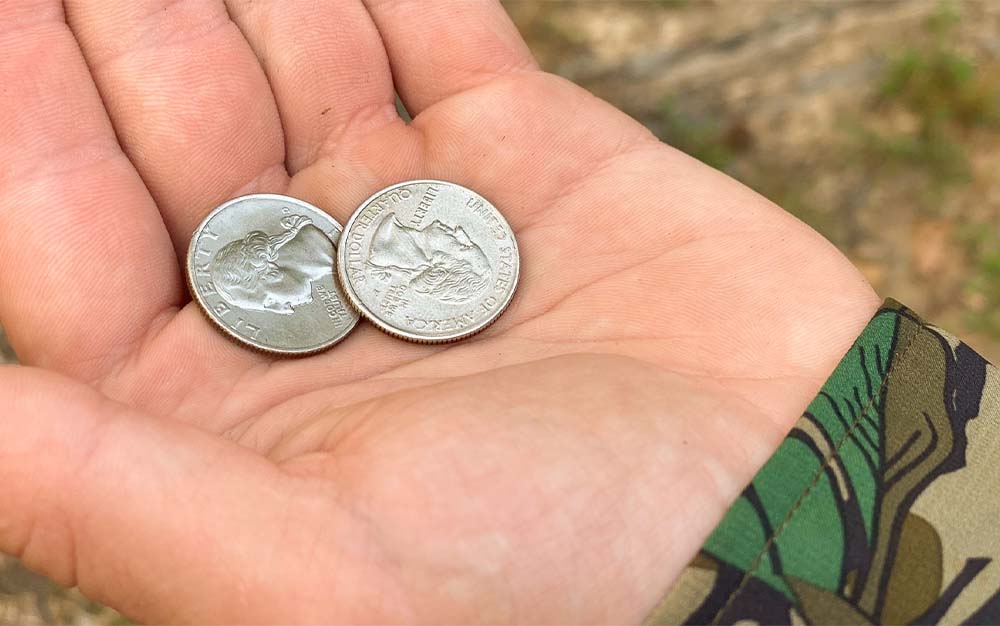
Why It Made the Cut
The two-quarter method is one of the best squirrel calls to mimic the cutting sound of a squirrel in the treetops as it feeds on hickory nuts. And the grinding of the ridges found on the outer edges of a quarter against itself simulates this cutting sound perfectly.
Key Features
- Two U.S. quarters with ridges on outer edge
- Material: Copper with a copper/nickel coating
Pros
- Produces authentic cutting sound
- Inexpensive
- Available
- Packable
Cons
- Limited volume
- Doesn’t demand a response like other calls
- Easy to lose or spend
Product Description
This is one of the easiest calls to acquire and use on this list. It’s a soft and subtle sound, but one that carries to impressive distances on a calm and quiet day in the woods. It’s a great early season call when squirrels are actively feeding on hickory or beech nuts. And it’s one that might best be labeled a confidence or curiosity call.
You might be wondering why you’d need a call in the early season when squirrels are abundant and gorging themselves on nuts. The truth is, this sound works to settle a squirrel down after it’s been spooked. Whether you’ve bumped a squirrel while moving in close or stirred things up by firing your gun, the two-quarter cutting call is a great way to help squirrels in the area to settle back down and resume feeding.
Keep in mind, squirrels are territorial. They are a lot like hogs and will not be left out of a feeding frenzy. When they know other squirrels are back on the move to feed, they’ll quickly join, which is why this call works so well.
Simply grind the quarters against one another along their ridged edges. It perfectly mimics the sound of a squirrel’s teeth cutting against a hickory nut. Add realism to your routine by throwing nuts (or rocks) to the ground to resemble the thud of nuts falling from the treetops. Again, these are audible cues that squirrels are actively feeding in the area. And gray or fox squirrels can hardly resist them.
Best DIY: Lemongrass

Why It Made the Cut
The lemongrass calling method has been passed down by squirrel hunters for generations. When performed properly, it’s far more realistic than any store-bought call, especially when it comes to distress whistles.
Key Features
- All natural DIY option
- Made from grass blades
- Incredibly life-like sound
Pros
- Super realistic
- Easy to acquire
- Inexpensive
Cons
- Not a native grass found locally in the wild (must be store-bought)
- Requires a learning curve
- Not pack/vest friendly
Product Description
Sometimes the best squirrel calls are the ones you make yourself. That certainly seems to be the case when it comes to the whistle sounds produced by this DIY lemongrass option.
Lemongrass is a tall perennial grass native to the tropical climates of Asia, Australia, and Africa. But don’t worry, you can still get your hands on a small batch of lemongrass at your local grocery story for a couple bucks. In fact, a two-dollar pack of lemongrass is enough to make more than enough squirrel calls to keep you busy.
Simply remove the outer layer of the stalk. Then, split and peel back a blade. When folded back over itself, the grass makes somewhat of a sound chamber that you’ll suck air through.
When placed on your lips, this inhale style call allows you to emit the whistling sounds of a distress squirrel or the cries of a baby squirrel. Again, when done properly, this method produces the most lifelike distress sounds out there.
READ NEXT: Squirrel Hunting Tips and Tactics
FAQs
Squirrel calls cost anywhere from $10 to $20. But there are also options for making your own, or using products you already have around the house that will cost you very little, if anything at all.
Because the majority of squirrel calls produce the sounds of excitement, alert, or distress, it’s best to use a squirrel call as a backup plan. If you already have squirrels in range there’s not really a need to make a call, since most of these will either put the squirrels on alert or scare them out of the area. The distress whistle of a young/baby squirrel is best used in the early season when sow squirrels are likely to have young squirrels in the den.
The lemongrass squirrel call is a great DIY option you can make at home, as well as the 2-quarter cutter call that simply requires you to round up some loose change. Slits cut in the end of an empty shotgun hull can also produce the cutting sounds of a squirrel feeding on a nut when you roll/grind the hull with your fingers.
To make a squirrel call with your mouth, make the kissing sound on the palm of your hand to simulate the barks and screeches of an alerted squirrel. It’s much like the lip-squeak you might use as a finisher call when predator hunting. Calling against the palm of your hand adds volume and allows you to manipulate the sound to that of an alert or agitated squirrel.
Squirrel calls will work at most any time of the season. However, keep in mind that pressure from predators and a lack of foliage on trees cause squirrels to be much more skittish in the late season. Their movement will be quick and direct. The early season tends to be the best for squirrel activity and calling success.
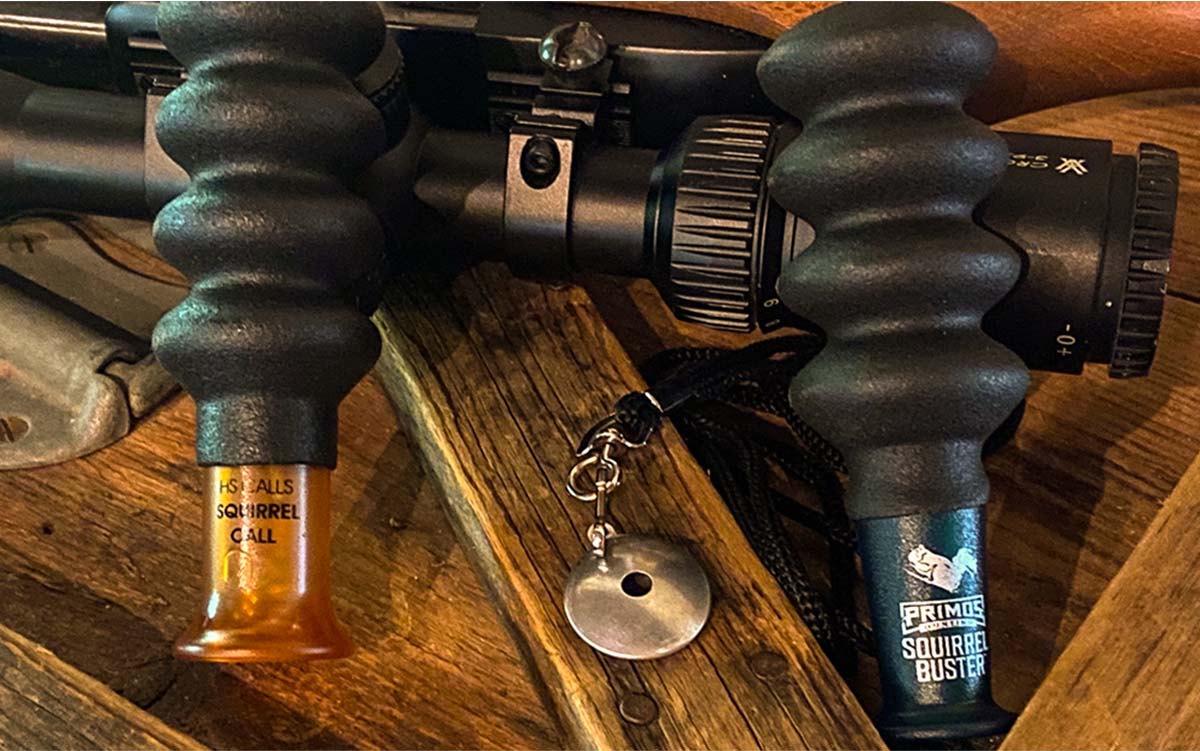
Things to Consider When Buying a Squirrel Call
As a young boy, I bought the first squirrel call I found hanging on the shelf at the local Buck “N” Bass store. There was no questioning whether I needed it, or how much it cost. In those days, squirrel call options were few and far between. Luckily, there are more call options available now than ever. So, before you head to the sporting goods store or shop online for squirrel calls, here are a few things to consider.
How They Work
As a young hunter, I was naïve in my expectations of how a squirrel call should work. And while squirrels will approach the sound of your call from time to time, these calls are designed to make squirrels talk (chattering or barking) to give away their location, rather than setting them in front of your crosshairs or bead.
Buy or Build
Before you buy a call, consider some DIY options to build your own. You’ll often hear old-school squirrel hunters talk about calling squirrels with two quarters or a blade of grass, and there’s a reason serious squirrel hunters still use these methods.
Cost
Fortunately, squirrel calls are relatively cheap. You’ll find options on the shelves starting around $10 and combo packs with multiple calls included for $25. Again, homemade options are easily acquired for a couple bucks, if not free.
Evaluating Squirrel Calls
I selected the calls on this list based on quality in sound, ease of use, and the value in price. There have been a number of manufactured calls over the years that have come and gone, but the calls mentioned above, for the most part, are still found on the shelves of popular sporting goods stores today.
I’ve used these calls over the years to effectively locate and bag a ton squirrels. Do they work every time? Absolutely not. Do they work enough to earn a spot in your squirrel vest? No doubt about it.
Final Thoughts
When the action gets slow, the best squirrel calls can be the ticket to get them talking, so you make a move for a shot. They add an exciting element to hunting squirrels and should help you put more of them in the bag.
